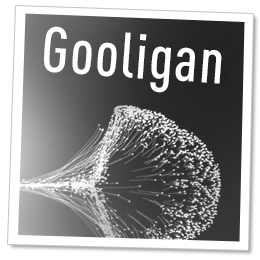
As you know by now from the latest buzz. Over 1 Million #Google Accounts Hacked by ‘Gooligan’. Gooligan itself isn’t new, as its just a variant of Ghost Push, a piece of Android malware
Researchers from security firm Check Point Software Technologies have found the existence of this malware in apps available in third-party marketplaces.
Once installed it then roots the phone to to gain system level access. The rooted devices then download and install software that steals the authentication tokens that allow the phones to access the owner’s Google-related accounts without having to enter a password. The tokens work for a variety of Google properties, including Gmail, Google Photos, Google Docs, Google Play, Google Drive, and G Suite
In a recent blog post by the folks over at Check Point: http://blog.checkpoint.com/2016/11/30/1-million-google-accounts-breached-gooligan/
“The infection begins when a user downloads and installs a Gooligan-infected app on a vulnerable Android device. Our research team has found infected apps on third-party app stores, but they could also be downloaded by Android users directly by tapping malicious links in phishing attack messages. After an infected app is installed, it sends data about the device to the campaign’s Command and Control (C&C) server.
Gooligan then downloads a rootkit from the C&C server that takes advantage of multiple Android 4 and 5 exploits including the well-known VROOT (CVE-2013-6282) and Towelroot (CVE-2014-3153). These exploits still plague many devices today because security patches that fix them may not be available for some versions of Android, or the patches were never installed by the user. If rooting is successful, the attacker has full control of the device and can execute privileged commands remotely.
After achieving root access, Gooligan downloads a new, malicious module from the C&C server and installs it on the infected device. This module injects code into running Google Play or GMS (Google Mobile Services) to mimic user behavior so Gooligan can avoid detection, a technique first seen with the mobile malware HummingBad. The module allows Gooligan to:
- Steal a user’s Google email account and authentication token information
- Install apps from Google Play and rate them to raise their reputation
- Install adware to generate revenue
Ad servers, which don’t know whether an app using its service is malicious or not, send Gooligan the names of the apps to download from Google Play. After an app is installed, the ad service pays the attacker. Then the malware leaves a positive review and a high rating on Google Play using content it receives from the C&C server.”
Android users who have downloaded apps from third-party markets can visit the Check Point blog post for a list of the apps known to contain Gooligan.
Also Check Point has released what is being called the Gooligan Checker web page to be used to check if you have been compromised by this latest threat.